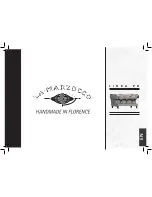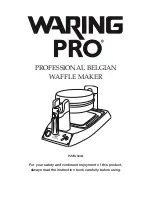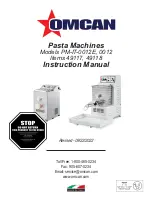
8
1. During transportation, the incline angle of the ice maker should not exceed 45
°
. To prevent
damage to the compressor or refrigeration systems, the ice maker should always remain right side
up.
2. Unpack the ice maker and remove all documents and spare parts.
3. Place the ice maker in a well-ventilated area on a level and structurally sound surface away from
sources of heat and corrosive gas. Allow at least 6 inches of space all around the exterior of the ice
maker for proper ventilation.
4. Adjust the leveling legs after placing the ice maker. Doing so will ensure the water level and ice
shape will be unaffected. The outlet of the drainage tube should be lower than the cabinet to drain
water easily. Wait approximately 12 hours after positioning the ice maker before use.
5. Connect one end of a flexible, plastic corrugated pipe with the water drainage hose on the
underside of the ice maker. The other end of the pipe should be placed in a container or sewer that
can capture surplus water. We do not recommend draining into a bucket. An air gap will likely be
required between the water drainage hose and the drain/waste receptacle. This must be prepared
by the user.
6.
Connect one end of the water inlet hose (supplied with the ice maker) with the ¾” screw type
connector to the potable water supply or filter. The water pressure of the water inlet hose is 1~8
kg/cm². The other end of the water inlet hose should be connected with the screw type connector
of the water inlet valve on the rear of the ice maker.
7. Be sure the gaskets are installed in both ends of the water inlet hose before connecting.
EN - 8
INSTALLATION
Connect to a potable water supply only. It is recommended to install a water filter. The
water inlet hose would connect to the filter and to the inlet valve on the machine.









































